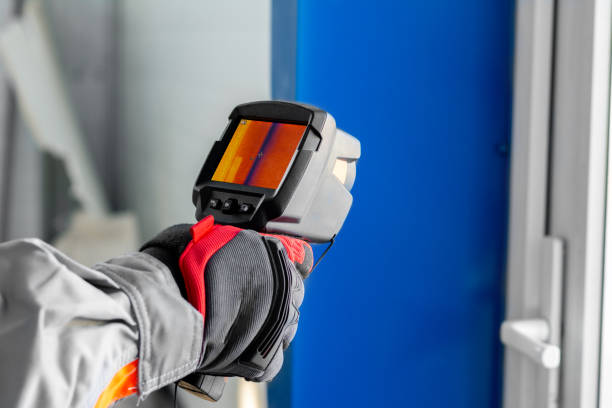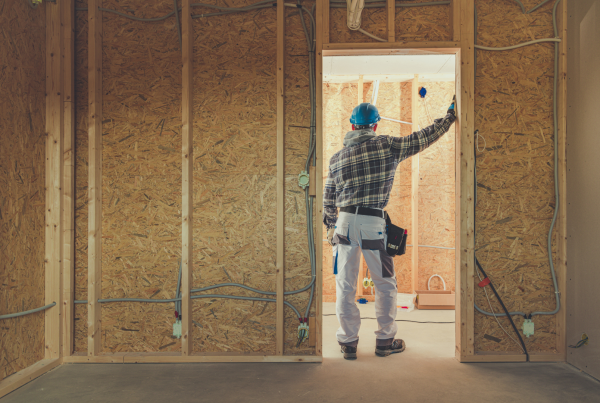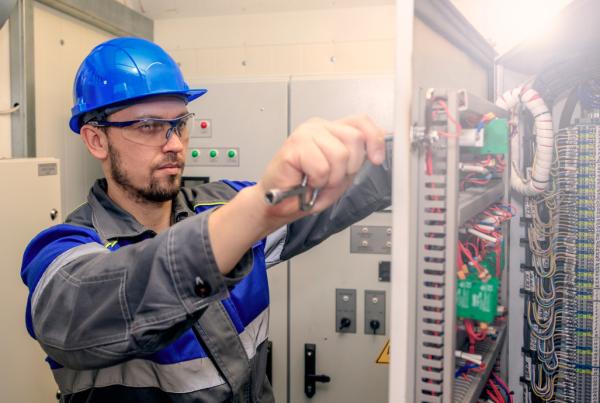Preventative Maintenance in Industrial Facilities: The Critical Role of Thermal Imaging
Preventative maintenance is a fundamental aspect of managing industrial facilities, particularly in the construction and construction-related industries. The integration of advanced diagnostic tools, such as thermal imaging, has revolutionized the approach to equipment and facility maintenance, ensuring greater efficiency, safety, and cost-effectiveness. This article delves into the multifaceted benefits of incorporating thermal imaging into preventative maintenance strategies.
1. Introduction to Preventative Maintenance and Thermal Imaging: Preventative maintenance refers to the routine inspection and servicing of equipment to prevent sudden failures and extend its operational life. Thermal imaging, a technique that captures the heat distribution of an object or area, has become an invaluable tool in this process. It provides a visual representation of temperature variations, which are indicative of potential issues in mechanical and electrical systems. This non-contact, non-invasive method allows for quick and accurate diagnostics, making it an essential component in modern maintenance practices.
2. Extending Equipment Lifespan: One of the most significant advantages of preventative maintenance, especially when augmented with thermal imaging, is the extension of equipment lifespan. By detecting anomalies such as overheating, wear and tear, and other irregularities, thermal imaging allows for the early resolution of issues that could otherwise lead to equipment breakdowns. For instance, in the realm of electrical construction, thermal imaging can reveal hot spots in electrical panels and connections before they develop into major problems, thereby preventing expensive repairs and replacements.
3. Enhancing Safety in Industrial Environments: Safety is a top priority in industrial settings, and thermal imaging plays a critical role in ensuring it. The technology can detect potential safety hazards such as overheated equipment, poor electrical connections, and insulation breakdowns. By identifying these risks early, preventative maintenance can be carried out to avert accidents, fires, and other hazardous incidents, thereby safeguarding employees and property.
4. Reducing Downtime and Improving Productivity: Unscheduled downtime is a major concern in any industrial operation. Preventative maintenance, particularly when supplemented with thermal imaging, can significantly reduce downtime by identifying problems before they cause a halt in operations. This proactive approach allows for repairs to be scheduled during non-critical operational periods, thereby minimizing impact on productivity. In construction-related businesses, where project timelines are critical, this can be a game-changer.
5. Cost-Effectiveness of Preventative Maintenance: While the initial investment in thermal imaging equipment and training may be considerable, the long-term cost savings are substantial. By preventing major breakdowns, reducing downtime, and extending equipment lifespan, preventative maintenance with thermal imaging significantly reduces overall operational costs. This cost-effectiveness is particularly pertinent in industries where equipment is expensive and critical to business operations.
6. Compliance and Industry Standards: Many industries are governed by strict regulatory standards, particularly regarding safety and environmental impact. Regular preventative maintenance, enhanced with thermal imaging, ensures compliance with these regulations. It demonstrates a commitment to maintaining equipment and facilities to the highest standards, which is not only a regulatory requirement but also builds trust with clients and stakeholders.
7. Predictive Maintenance and Advanced Data Analysis: The integration of thermal imaging data into predictive maintenance models marks a significant advancement in maintenance strategies. By analyzing thermal images over time, patterns and trends can be identified, allowing for the prediction of potential failures before they occur. This approach, which often involves sophisticated data analysis and machine learning algorithms, further optimizes maintenance schedules and resource allocation.
8. Thermal Imaging and Environmental Impact: Thermal imaging also plays a role in reducing the environmental footprint of industrial operations. By ensuring that equipment is running efficiently and without leaks or faults, energy consumption can be minimized. This is particularly relevant in industries like electrical construction, where inefficient systems can lead to significant energy waste.
9. Training and Skill Development: The effective use of thermal imaging in preventative maintenance requires specialized training and skill development. Investing in employee training not only enhances the effectiveness of maintenance routines but also contributes to a more skilled and knowledgeable workforce. This investment in human capital can provide long-term benefits for the business, including improved problem-solving capabilities and enhanced employee engagement.
10. Case Studies and Industry Examples: Several case studies across different industries illustrate the benefits of integrating thermal imaging into preventative maintenance. For example, in a manufacturing facility, thermal imaging identified overheating in a critical motor, allowing for repairs before a costly shutdown. In another instance, a construction company used thermal imaging to detect insulation deficiencies in a new building, leading to energy savings and improved building performance.
11. Future Trends and Technological Innovations: As technology continues to advance, the role of thermal imaging in preventative maintenance is likely to grow. Innovations in sensor technology, data analytics, and automation are expected to further enhance the capabilities of thermal imaging, making it an even more integral tool in maintenance strategies. The integration of thermal imaging with other technologies such as the Internet of Things (IoT) and artificial intelligence (AI) is also likely to open new possibilities for predictive and efficient maintenance practices.
Conclusion: In conclusion, the incorporation of thermal imaging into preventative maintenance strategies offers a multitude of benefits for industrial facilities, especially in the construction and electrical sectors. It enables early detection of potential issues, enhances safety, improves efficiency, and contributes to cost savings. As industries evolve and new technologies emerge, the importance of thermal imaging in maintenance practices is set to increase, solidifying its role as a critical tool for modern industrial operations. For businesses looking to maintain a competitive edge, investing in thermal imaging and preventative maintenance is not just a choice but a necessity.




